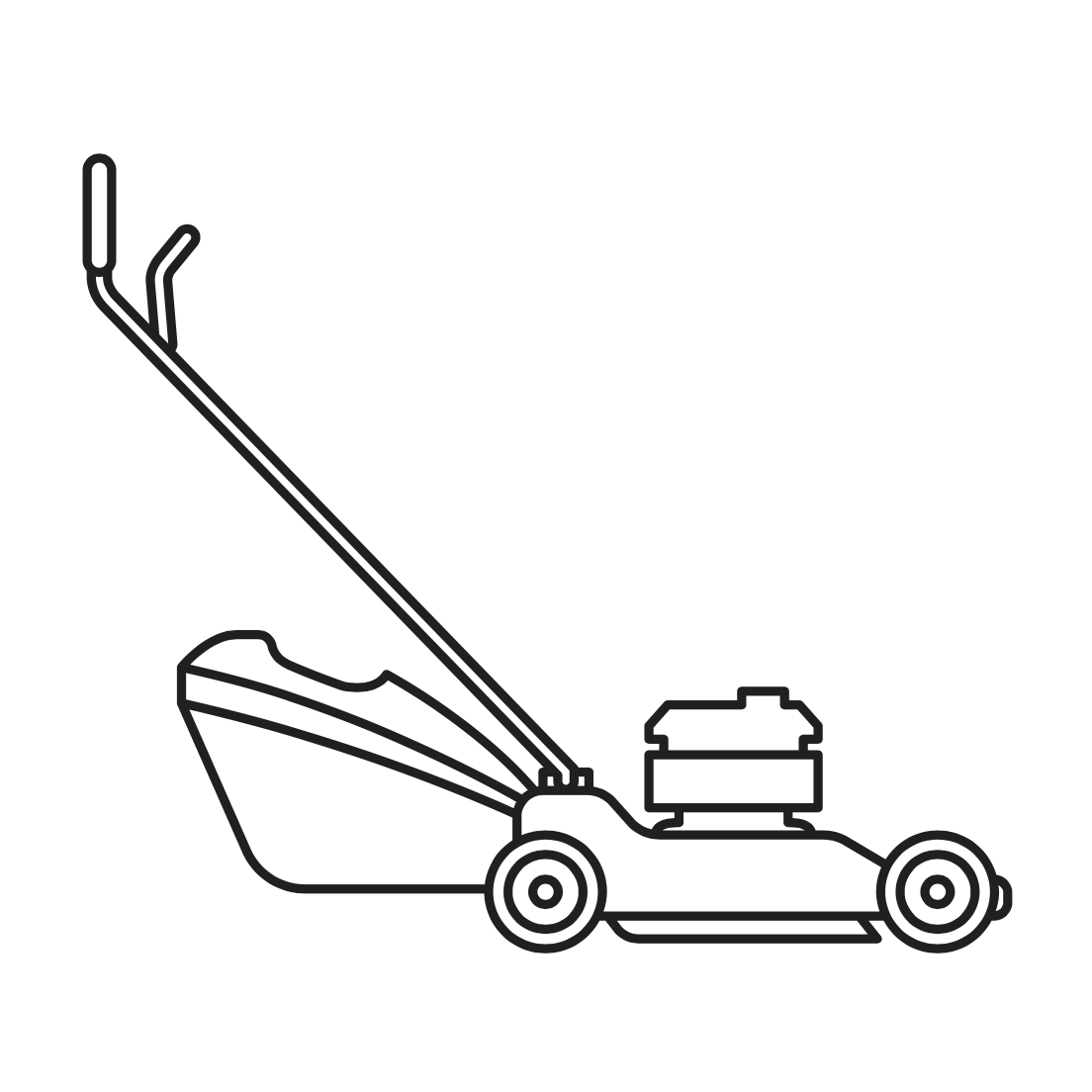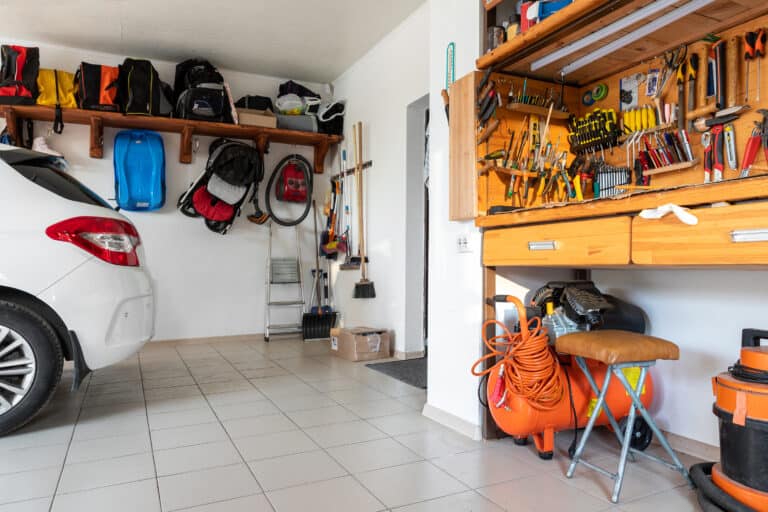Ultimate Guide to Picking a Lawn Mower [2022]
Yards are different, and so are lawnmowers. While every lawnmower is designed to mow a lawn that doesn’t mean a $400 lawn mower will work the same as a $4,000 mower. While cost is a factor there are other facets and features to consider. To help, here’s what you need to know to help buy the right lawnmower for your needs.
What Type of Lawn Mower Should You Buy?
Your first choice is going to be whether or not to purchase a riding mower or a walk-behind lawnmower, also known as a push mower.
For most homeowners who live in urban settings on property that is less than a quarter-acre (about 1,000 square metres or 11,000 square feet), a walk-behind mower is more than sufficient. Smaller yards can be better suited for push mowers and even manual lawn mowers, while larger yard homeowners will benefit from propelled lawn mowers, such as gas, plug-in electric or battery-powered lawnmowers.
For homeowners living on larger land plots, it may be worthwhile to consider a lawn tractor or riding lawnmower. Lawn tractors come with two types of motor types — a front-mounted motor and a rear-mounted mower. Rear-engine lawn mowers will have more power, so if you have hills and valleys, you may want to learn more about this type of lawnmower. (Keep in mind, that these mowers go by a number of different terms, including light-duty tractors, zero-turn mowers, as well as sit-on mowers.)
For lawns over two acres, you’ll want to start looking at commercial duty lawn machines. You won’t find push powers in this category, so start your search for commercial duty zero-turn mowers or lawn tractors.
Right Type of Drive (How the Lawn Mower Feels)
While there are a variety of features that will impact the ease and comfort of using your lawnmower, one of the more significant factors is the mower’s drive.
The drive is how the mower feels. For a walk-behind mower, the feeling will either be you pushing the mower — a front-drive mower — or the mower pushing itself, a rear-drive mower. Rear-drive mowers feel like self-propelled machines —which is why these mowers are referred to as self-propelled mowers — and, as you can imagine, can be much easier to use, particularly on hills and lawns filled with gulleys. (There’s also an all-wheel-drive mower, which are machines that can easily tackle any terrain but also come with a higher price tag).
In short:
- Front-wheel drive: Good for level ground and property under a quarter of an acre
- Rear-wheel drive: Good for lawns with hills (think gullies and sidehills)
- All-wheel drive: The all-terrain mower, these machines are pricier but allow homeowners to mow across all terrains and at any angle
How Big Should the Lawn Mower Engine Be?
The engine is an essential deciding factor because it influences the lifespan and power of your lawnmower. Choose a lawnmower with too small an engine for your yard size and you’ll end up having to replace the machine much quicker.
As with most tools, pick a lawnmower with a high-quality engine: one that is built for the size of your lawn and your frequency of use.
For most urban homes, a lawnmower with an engine that is 14 to 16 horsepower is powerful enough to get the job done quickly. For larger homes, yards with many hills or particularly fast-growing or wet areas, consider a bigger engine lawn mower, to help prolong the life of your lawnmower.
What’s the Best Lawn Mower for My Yard Size?
The larger the deck (the circumference of the blades cutting the grass) the quicker you will complete the task. This feature is particularly important on very large or uneven terrain yards.
As a general rule of thumb, here’s when and what to consider:
- Up to 5,000 square feet: 12 to 21-inch decks
- 5,000 to 20,000 square feet: 18 to 34-inch decks
- 20,000 to 80,000 square feet: 30 to 44-inch decks
- 80,000 square feet of yard space or more: 42-inch decks or more
Other Features To Consider?
Since you will be using your lawnmower for long periods, it’s best to invest in one that comes with several convenience features. For example, a one-lever height adjustment will prevent you from slouching when using your lawnmowers. Lawnmowers with upright storage are also ideal if you have tight or small spaces for storage.
Other convenience features to look for in a lawnmower include washout ports, folding handles, electric start, blade-brake clutch, hydrostatic transmission, electric power take-off switch, and reverse safety switch.
Fuel-Type + Best Options for Every Type of Lawn
These days you can purchase manual (push mowers with no motor), electric, battery and gas-powered lawnmowers.
Manual (no motor)
This is the tool that started it all. Built without a motor, manual push powers are walk-behind options that use your labour to power the tool and cut the grass. However, these lawnmowers can have smaller decks — the part that covers the blades and dictates how wide of a cut the mower will give you — which means you’ll take longer to cut your grass.
Pros:
- Very quiet (no motor!)
- Little to no maintenance (just clean and cut the blades)
- Very inexpensive to run (no motor, no power needs)
- Cheapest lawnmower option on the market
Cons:
- Decks can be fairly small, ranging from 12 to 21 inches
- No motor so you do all the work
- These tools don’t come with additional features or extras, such as mulch or side-discharge, so you’ll have the extra job of cleaning up your yard after you’ve mowed the lawn
Best For:
- Smaller years where the mowing area is 5,000 square feet or less
- Yards that are relatively flat
- Homeowners who are concerned about the environment
- Homeowners on a tight budget
Best Options:
- Fiskars StaySharp Max Reel Mower (18-inch deck)
- Great States 204-14 Hand Reel (14-inch deck)
- Great States 5-Blade Reel Lawn Mower (16-inch deck)
Electric (corded)
Corded electric lawn mowers have been around for decades and over time have improved. Typically, these options are quiet, cheap to maintain, and offer a friendlier-to-the-environment option.
Pros:
- One battery can power multiple garden tools of the same brand (uses an interchangeable battery pack)
- Very easy to start — just push the button
- No exhaust fumes
- Quieter than gas counterparts
- Easier to maintain: Don’t require oil or regular tune-ups, just blade sharpening
Cons:
- Relatively short run time — typically 30 to 45 minutes (although the more expensive ones can give you 60 minutes of cut time), making them best only for a smaller yards
- Despite advances, battery-powered lawn mowers still have less power than their counterparts and will struggle with long or wet grass
Best For:
- Mowing areas that are 5,000 square feet or less
- Yards that are relatively flat
- Homeowners that don’t mind spending slightly longer mowing the lawn (due to the smaller deck size)
Best Options:
- Sun Joe Electric Lawn Mower (13 amp)
- Steel Deck – Greenworks 20″ Electric Lawnmower (12 amp)
- Greenworks Electric Lawnmower (9 amp)
Battery Powered Lawn Mower
Battery mowers use rechargeable lithium-ion battery packs and the best battery-powered electric lawn mowers can easily keep up with their gas counterparts.
You can find a battery lawn mower in both push (front-drive) and self-propelled (rear-drive) lawnmowers.
These mowers tend to have smaller decks. The larger the deck, the more lawn is cut in one single line. Cordless battery-powered mowers tend to have 19 to 20-inch decks, although you can find 21-inch models.
Pros:
- One battery can power multiple garden tools of the same brand (uses an interchangeable battery pack)
- Very easy to start — just push the button
- No exhaust fumes
- Quieter than gas counterparts
- Easier to maintain: Don’t require oil or regular tune-ups, just blade sharpening
Cons:
- Relatively short run time — typically 30 to 45 minutes (although the more expensive ones can give you 60 minutes of cut time), making them best only for a smaller yards
- Despite advances, battery-powered lawn mowers still have less power than their counterparts and will struggle with long or wet grass
Best For:
- Mowing areas that are 5,000 square feet or less
- Yards that are relatively flat
- Homeowners that don’t mind spending slightly longer mowing the lawn (due to the smaller deck size)
Best Options:
- Ego Power+ Cordless Mower (21-inch deck)
- Greenworks Twin Force (20-inch deck)
- Ryobi 40v Brushless Lawn Mower (21-inch deck)
- Toro Recycler Cordless Lawn Mower (22-inch deck)
Gas Powered Lawn Mower
Gas-powered lawn mowers are still the homeowner’s go-to machine. Not limited by a battery charge, these machines come in push, self-propelled and ride-on options — plus, they usually cost less than battery-powered lawnmowers.
Motors range from 140 cc to 190 cc. The larger engines produce more torque and are less likely to stall in tall or wet grass (which is a standard expectation at the beginning and end of every cutting season). Larger engines also help drive self-propelled mowers more effectively uphill, making them better suited for uneven yards.
Pros:
- Can handle long-grass and thicker grasses better than other walk-behind lawnmower types
- Better in environments where grass frequently gets wet
- Often come with helpful features such as bag, side-discharge and mulch options
- Cost less than the battery-powered options
- Run-time lasts much, much longer than battery-powered options
Cons:
- Noisy with many machines emitting a motor noise in the 85-decibel range (which is why it’s suggested that operators wear ear protection)
- Produces emissions
- Require frequent maintenance including tune-ups, oil changes and blade sharpening
- Must be winterized, when put away from the season, which includes taking care of the gas and oil tanks (as with any other combustible motor)
Best For:
- Mowing areas that are 5,000 square feet or less
- Yards that are relatively flat
- Homeowners that don’t mind spending slightly longer mowing the lawn (due to the smaller deck size)
Best Options:
- Honda HRN216PKA
- Toro Recycler 21332 / Toro Recycler SmartStow 21329
- Troy-Bilt TB 115
- Craftsman M160
Ride-On Lawn Mowers / Lawn Tractors
These gas-powered machines have wider decks and more powerful motors which allow you to cut the lawn two to three times faster than their counterparts.
Pros:
- Can handle larger yards with each due to high-powered motor and torque
- Decks are typically much larger — usually, 42 to 48 inches, although some come as wide as 54-inches — which can dramatically reduce lawn cutting time
- Machines can bag, mulch and side-discharge clippings
- Easy to use as they rely on steering that is similar to operating a car
- More expensive options have high-backed, soft-padded seats with suspension which makes it far more comfortable to sit and use the machine for longer periods of time
Cons:
- These machines are much more expensive than walk-behind models
- Bagging kits often cost extra
- Create much more exhaust than other gas-powered options
- Require a lot of storage space
- When compared to zero-turn mowers, lawn tractors have a wide turning radius and lower top speed.
- Require frequent maintenance including tune-ups, oil changes and blade sharpening
- Must be winterized, when put away from the season, which includes taking care of the gas and oil tanks (as with any other combustible motor)
Best For:
- Larger, hillier yards that are 20,000 square feet of cutting space or more
Best Options:
- John Deere, X350-42
- John Deere, S240-48
- John Deere S170
- John Deere S120
- Husqvarna TS 354X
Zero-Turn Mowers
These are the prosumer or commercial lawn tractors that command the highest sticker price.
Pros:
- The rear engine and rear-wheel steering mean these machines handle any terrain — even uneven or extreme hills — with ease
- Easy to maneuver around obstacles, such as garden beds and trees
- Some newer models have steering wheels
- Can bag, mulch and side-discharge clippings
- Decks are typically 42 to 50-inches wide
- Most are gas-powered, but it’s now possible to find electric battery-powered versions in the marketplace
Cons:
- These cost much more than other options in the market
- Rather than a steering wheel, you control a zero-turn with a pair of levers pushing one forward and the other rearward causing the mower to turn in place
- Rear wheels can tear up the grass when turning, so learning how to operate these machines is key
- Bagging kits are expensive
- Not well-suited for hilly properties as the machine can lose traction making it hard to control on angled slopes
Best For:
- Large, fairly flat properties that are 20,000 square feet of cutting space or larger.
Best Options:
- Gravely ZT HD 48 991152
- Toro MyRide TimeCutter 75755
- John Deere Z515E
How to Find your Next Lawn Mower
Generally, walk-behind lawn mowers for residential use cost around $200 to $600. Expect to spend more if you’re eyeing buying a lawnmower with more and better features, namely easy-rolling ball bearing wheels, long-lasting composite or aluminum decks, and top-quality engines. Most lawn mowers come with longer warranties, too.
If you want your next lawnmower to be worth the investment, save more so you can afford a model that is made from high-quality materials, offers more features, and has a longer warranty. Buying this kind of lawn mower will save you more money (and stress) in the long run as you don’t have to regularly pay for its repairs or replacements.
What’s the Best Time of Year to Buy a Lawn Mower?
The general rule of thumb when purchasing any type of outdoor power equipment is to think about buying before or after peak season. That doesn’t mean shopping for a lawnmower in December, but it does mean being ready and prepared as soon as the garden equipment starts hitting the shelves. Quite often, stores will try to entice buyers by offering sales and savings at the start of the season. Knowing what you want helps you ignore the noise and focus on the models — and potential discounts — that work best for your yard and budget. End-of-the-season sales are all about reducing inventory, which makes it another good time for homeowners to go shopping for a lawnmower although the selection may not be as great.







